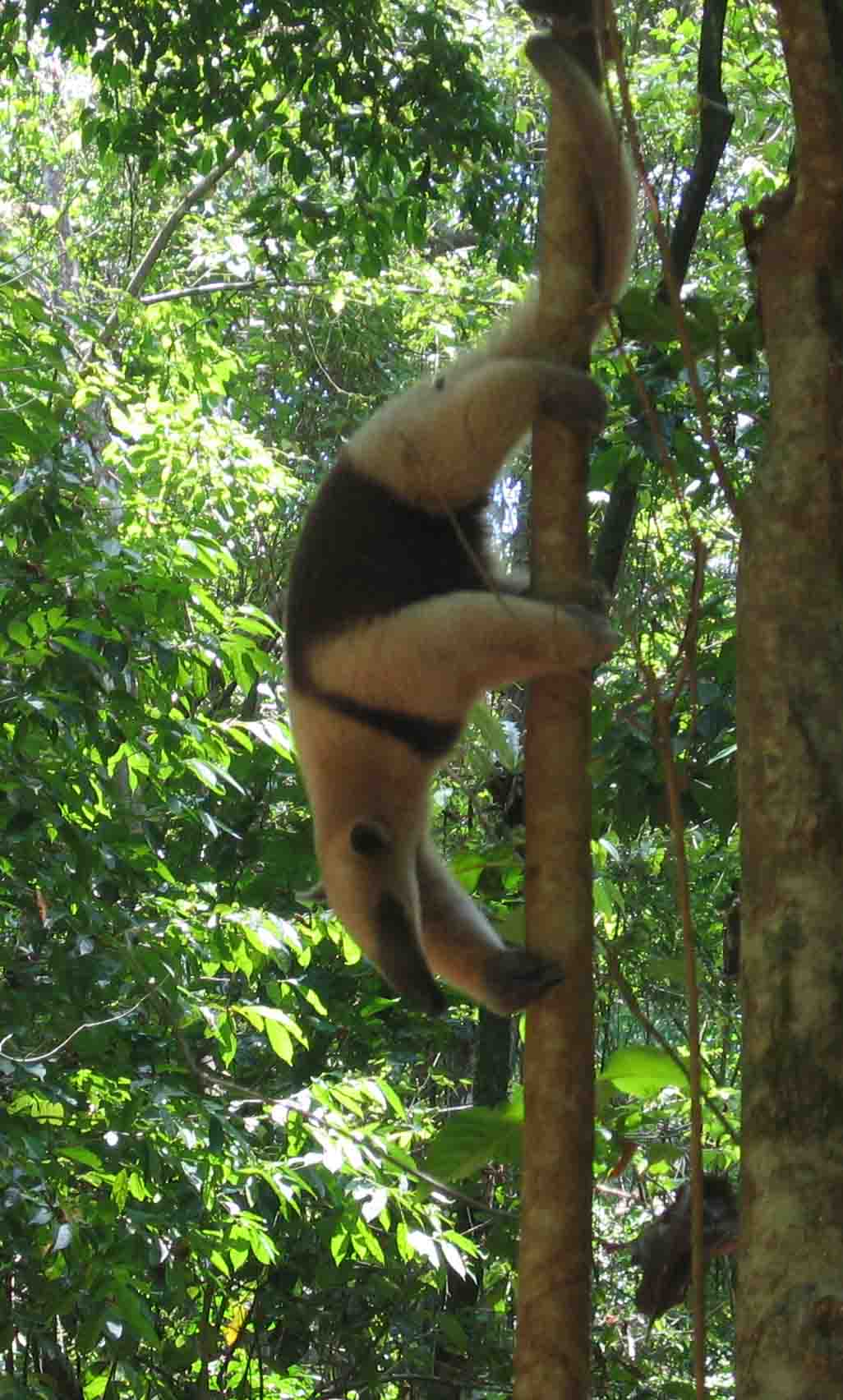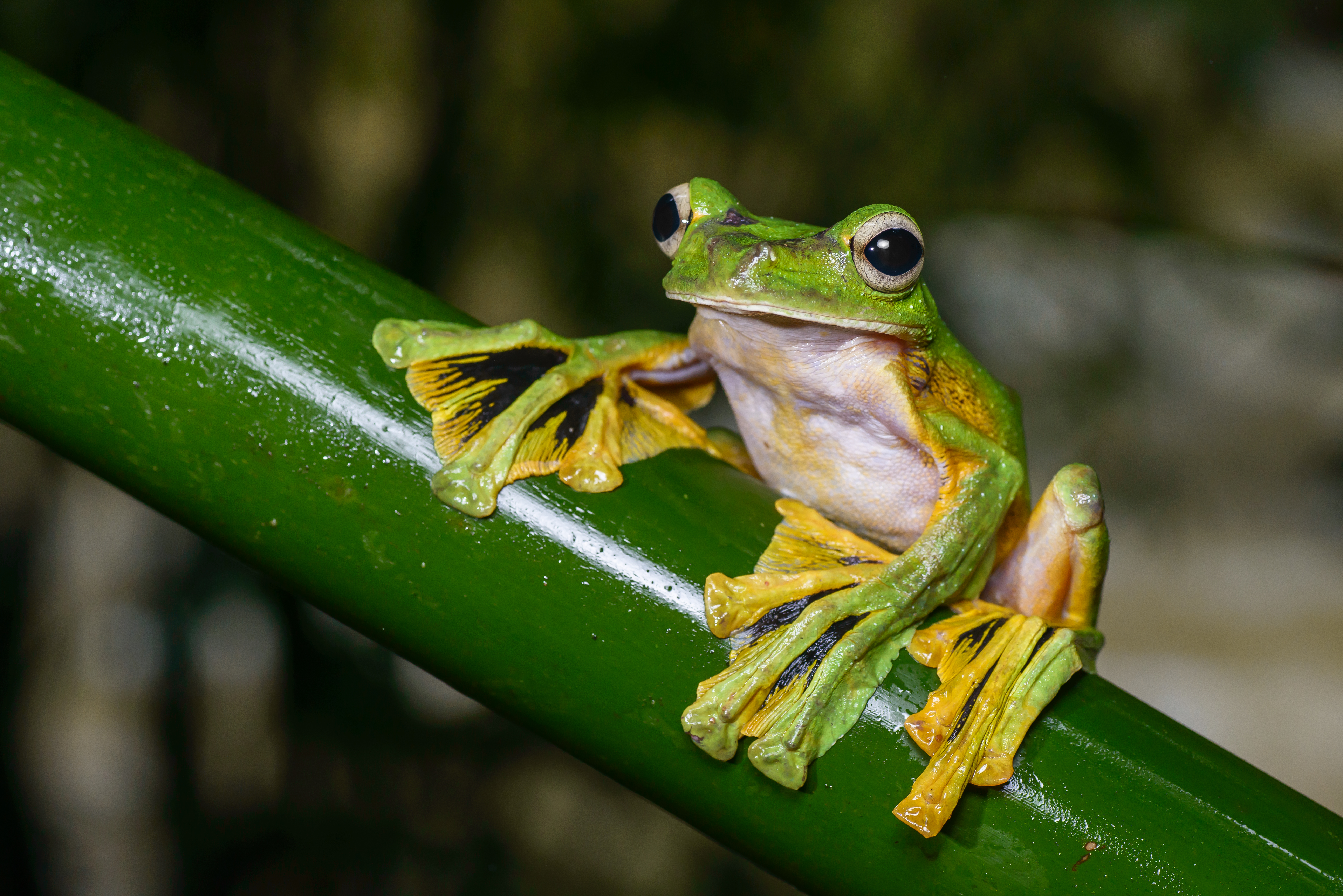|
Arboreal
Arboreal locomotion is the locomotion of animals in trees. In habitats in which trees are present, animals have evolved to move in them. Some animals may scale trees only occasionally (scansorial), but others are exclusively arboreal. The habitats pose numerous mechanical challenges to animals moving through them and lead to a variety of anatomical, behavioral and ecological consequences as well as variations throughout different species. Cartmill, M. (1985). "Climbing". pp. 73–88 ''In'': Hildebrand, Milton; Bramble, Dennis M.; Liem, Karel F.; Wake, David B. (editors) (1985). ''Functional Vertebrate Morphology''. Cambridge, Massachusetts: Belknap Press. 544 pp. . Furthermore, many of these same principles may be applied to climbing without trees, such as on rock piles or mountains. Some animals are exclusively arboreal in habitat, such as tree snails. Biomechanics Arboreal habitats pose numerous mechanical challenges to animals moving in them, which have been solved in ... [...More Info...] [...Related Items...] OR: [Wikipedia] [Google] [Baidu] |
Animal Locomotion
In ethology, animal locomotion is any of a variety of methods that animals use to move from one place to another. Some modes of locomotion are (initially) self-propelled, e.g., running, swimming, jumping, flight, flying, hopping, soaring and gliding. There are also many animal species that depend on their environment for transportation, a type of mobility called passive locomotion, e.g., sailing (some jellyfish), ballooning (spider), kiting (spiders), rolling (some beetles and spiders) or riding other animals (phoresis). Animals move for a variety of reasons, such as to foraging, find food, a mating system, mate, a suitable microhabitat, or to escape response, escape predators. For many animals, the ability to move is essential for survival and, as a result, natural selection has shaped the locomotion methods and mechanisms used by moving organisms. For example, animal migration, migratory animals that travel vast distances (such as the Arctic tern) typically have a locomotion me ... [...More Info...] [...Related Items...] OR: [Wikipedia] [Google] [Baidu] |
Phalangeriformes
Phalangeriformes is a paraphyletic suborder of about 70 species of small to medium-sized arboreal locomotion, arboreal marsupials native to Australia, New Guinea, and Sulawesi. The species are commonly known as possums, opossums, gliders, and cuscus. The common name "(o)possum" for various Phalangeriformes species derives from the creatures' resemblance to the opossums of the Americas (the term comes from Powhatan language ''aposoum'' "white animal", from proto-Algonquian language, Proto-Algonquian *''wa·p-aʔɬemwa'' "white dog"). However, although opossums are also marsupials, Australasian possums are more closely related to other Australidelphia, Australasian marsupials such as kangaroos. Phalangeriformes are quadrupedalism, quadrupedal Diprotodontia, diprotodont marsupials with long tails. The smallest species, indeed the smallest diprotodont marsupial, is the Tasmanian pygmy possum, with an adult head-body length of and a weight of . The largest are the two species of be ... [...More Info...] [...Related Items...] OR: [Wikipedia] [Google] [Baidu] |
Chameleon
Chameleons or chamaeleons (Family (biology), family Chamaeleonidae) are a distinctive and highly specialized clade of Old World lizards with 200 species described as of June 2015. The members of this Family (biology), family are best known for their distinct range of colours, being capable of colour-shifting camouflage. The large number of species in the family exhibit considerable variability in their capacity to change colour. For some, it is more of a shift of brightness (shades of brown); for others, a plethora of colour-combinations (reds, yellows, greens, blues) can be seen. Chameleons are also distinguished by their zygodactylous feet, their prehensility, prehensile tail, their laterally compressed bodies, their head casques, their projectile tongues used for catching prey, their swaying gait, and in some species crests or horns on their brow and snout. Chameleons' eyes are independently mobile, and because of this the chameleon’s brain is constantly analyzing two sepa ... [...More Info...] [...Related Items...] OR: [Wikipedia] [Google] [Baidu] |
Prehensile Tail
A prehensile tail is the tail of an animal that has Adaptation (biology), adapted to grasp or hold objects. Fully Prehensility, prehensile tails can be used to hold and manipulate objects, and in particular to aid arboreal creatures in finding and eating food in the trees. If the tail cannot be used for this it is considered only partially prehensile; such tails are often used to anchor an animal's body to dangle from a branch, or as an aid for climbing. The term ''prehensile'' means "able to grasp" (from the Latin ''prehendere'', to take hold of, to grasp). Evolution One point of interest is the distribution of animals with prehensile tails. The prehensile tail is predominantly a New World adaptation, especially among mammals. Many more animals in South America have prehensile tails than in Africa and Southeast Asia. It has been argued that animals with prehensile tails are more common in South America because the forest there is denser than in Africa or Southeast Asia. In contra ... [...More Info...] [...Related Items...] OR: [Wikipedia] [Google] [Baidu] |
Gecko
Geckos are small, mostly carnivorous lizards that have a wide distribution, found on every continent except Antarctica. Belonging to the infraorder Gekkota, geckos are found in warm climates. They range from . Geckos are unique among lizards for their vocalisations, which differ from species to species. Most geckos in the family Gekkonidae use chirping or clicking sounds in their social interactions. Tokay geckos (''Gekko gecko'') are known for their loud mating calls, and some other species are capable of making hissing noises when alarmed or threatened. They are the most species-rich group of lizards, with about 1,500 different species worldwide. All geckos, except species in the family Eublepharidae lack eyelids; instead, the outer surface of the eyeball has a transparent membrane, the brille. They have a fixed lens within each iris that enlarges in darkness to let in more light. Since they cannot blink, species without eyelids generally lick their own brilles whe ... [...More Info...] [...Related Items...] OR: [Wikipedia] [Google] [Baidu] |
Arboreal Salamander
The arboreal salamander (''Aneides lugubris'') is a species of climbing salamander. An insectivore, it is native to California and Baja California, where it is primarily associated with oak and sycamore woodlands, and thick chaparral. Description ''Aneides lugubris'' is SVL (snout-vent length), with plain purplish-brown coloring, usually spotted dorsally with gold or yellow, although it may also be unspotted. This salamander has longer and sharper teeth than many others within the order, Urodela. ''Aneides lugubris'' are insectivorous and have been found to eat beetles, caterpillars, sow bugs, ants, and centipedes. The tail is prehensile. The juvenile is dark overall, clouded with greyish color and fine yellow speckling on the back. The male of this species can be distinguished by its broad triangular head, with the front teeth of the jaw extending beyond the bottom lip. A large adult can inflict a painful bite. This species is an excellent climber and difficult to capture. It ... [...More Info...] [...Related Items...] OR: [Wikipedia] [Google] [Baidu] |
Silky Anteater
The silky anteater, also known as the pygmy anteater, has traditionally been considered a single species of anteater, ''Cyclopes didactylus'', in the genus ''Cyclopes'', the only living genus in the family Cyclopedidae. Found in southern Mexico, and Central and South America, it is the smallest of all known anteaters. It has nocturnal habits and appears to be completely arboreal; its hind feet are highly modified for climbing. A taxonomic review in 2017, including both molecular and morphological evidence, found that ''Cyclopes'' may actually comprise at least seven species. The only known extinct cyclopedid species is '' Palaeomyrmidon incomtus'', from the Late Miocene ( c. 7 to 9 million years ago) of modern-day Argentina. Etymology The scientific name ''Cyclopes didactylus'' translates to "two-toed circle-foot", referencing the two claws present on the forefeet. Additionally, the name alludes to the toes' ability to nearly encircle a branch while clinging. Description S ... [...More Info...] [...Related Items...] OR: [Wikipedia] [Google] [Baidu] |
Green Tree Python
The green tree python (''Morelia viridis''), is a species of snake in the family Pythonidae. The species is native to New Guinea, some islands in Indonesia, and the Cape York Peninsula in Australia. First described by Hermann Schlegel in 1872, it was known for many years as ''Chondropython viridis''. As its common name suggests, it is a bright green snake that can reach a total length (including tail) of and a weight of , with females slightly larger and heavier than males. Living generally in trees, the green tree python mainly hunts and eats small reptiles and mammals. It is a popular pet, and numbers in the wild have suffered with large-scale smuggling of wild-caught green tree pythons in Indonesia. Despite this, the green tree python is rated as least concern on the IUCN Red List of endangered species. Taxonomy German naturalist Hermann Schlegel described the green tree python in 1872 as ''Python viridis'', from two specimens collected in the Aru Islands of Indonesia. His co ... [...More Info...] [...Related Items...] OR: [Wikipedia] [Google] [Baidu] |
Tree
In botany, a tree is a perennial plant with an elongated stem, or trunk, usually supporting branches and leaves. In some usages, the definition of a tree may be narrower, e.g., including only woody plants with secondary growth, only plants that are usable as lumber, or only plants above a specified height. But wider definitions include taller palms, tree ferns, bananas, and bamboos. Trees are not a monophyletic taxonomic group but consist of a wide variety of plant species that have independently evolved a trunk and branches as a way to tower above other plants to compete for sunlight. The majority of tree species are angiosperms or hardwoods; of the rest, many are gymnosperms or softwoods. Trees tend to be long-lived, some trees reaching several thousand years old. Trees evolved around 400 million years ago, and it is estimated that there are around three trillion mature trees in the world currently. A tree typically has many secondary branches supported cle ... [...More Info...] [...Related Items...] OR: [Wikipedia] [Google] [Baidu] |
Brachiation
Brachiation (from "brachium", Latin for "arm"), or arm swinging, is a form of arboreal locomotion in which primates swing from tree limb to tree limb using only their arms. During brachiation, the body is alternately supported under each forelimb. This form of locomotion is the primary means of locomotion for the small gibbons and siamangs of southeast Asia. Gibbons in particular use brachiation for as much as 80% of their locomotor activities. Some New World monkeys, such as spider monkeys and muriquis, were initially classified as ''semibrachiators'' and move through the trees with a combination of leaping and brachiation. Some New World species also practice suspensory behaviors by using their prehensile tail, which acts as a fifth grasping hand. Evidence has shown that the extinct ape ''Proconsul'' from the Miocene of East Africa developed an early form of suspensory behaviour, and was therefore referred to as a ''probrachiator.'' Upon further observations and more in de ... [...More Info...] [...Related Items...] OR: [Wikipedia] [Google] [Baidu] |
Flying Frog
A flying frog (also called a gliding frog) is a frog that has the ability to achieve gliding flight. This means it can descend at an angle less than 45° relative to the horizontal. Other nonflying arboreal frogs can also descend, but only at angles greater than 45°, which is referred to as parachuting.Emerson, S.B., Travis, J., & Koehl, M.A.R. (1990). "Functional complexes and additivity in performance: A test case with 'flying' frogs." ''Evolution'', 44(8), 2153-2157. Evolution Gliding flight has evolved independently several times among frogs from both New World ( Hylidae) and Old World ( Rhacophoridae) families.Emerson, S.B., & Koehl, M.A.R. (1990). "The interaction of behavioral and morphological change in the evolution of a novel locomotor type: 'Flying' frogs." ''Evolution'', 44(8), 1931-1946. This parallel evolution is seen as an adaptation to their life in trees, high above the ground. Characteristics of the Old-World species include "enlarged hands and feet, full ... [...More Info...] [...Related Items...] OR: [Wikipedia] [Google] [Baidu] |








